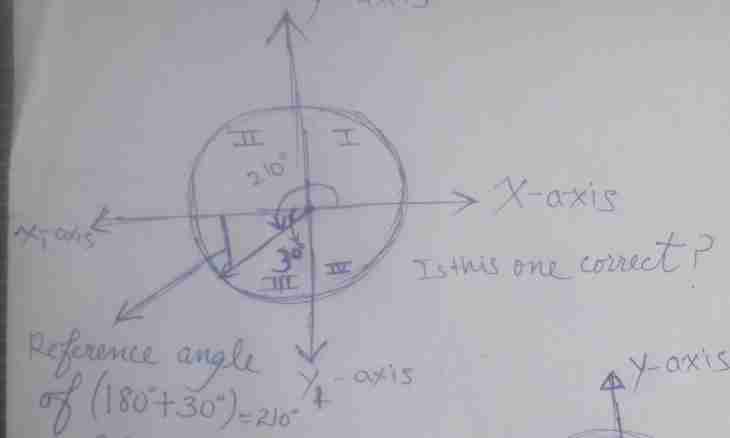Isosceles triangle is called the convex geometrical figure from three tops and three pieces connecting them, two of which have identical length. And the sine is a trigonometrical function which can be used for numerical expression of dependence between a ratio of lengths of the parties and sizes of corners in all triangles, including also isosceles.
Instruction
1. If from basic data the size at least of one corner (α) in an isosceles triangle is known, it will allow to find also two others (β and γ), so and a sine of any of them. You proceed from the theorem of the sum of corners which claims that it has to be surely equal in a triangle 180 °. If the corner of the known size lies between sides, the size of each of two others is equal to a half of a difference between 180 ° and the known corner. Means, you can use such identity in calculations: sin(β) = sin(γ) = sin ((180 °-α)/2). If the known corner adjoins the triangle basis, this identity will break up to two equalities: sin(β) = sin(α) and sin(γ) = sin (180 °-2*α).
2. Knowing the radius (R) of the circle described about such triangle and length of any of the parties (for example, a) it is possible without resorting to calculation of trigonometrical functions to calculate a sine of the angle (α), lying opposite to this party. Use for this purpose the theorem of sine - from it follows that the size necessary to you is equal to a half of a ratio between length of the party and radius: sin(α) = ½*R/a.
3. The known area (S) and length of side (a) of an isosceles triangle will allow to calculate a sine of the angle (β), the figure basis lying opposite. For this purpose double the area and divide result into the squared side length: sin(β) = 2*S/a². If except length of side also length of the basis (b) is known, the square can be replaced with the work of lengths of these two parties: sin(β) = 2*S / (a*b).
4. If lengths of side (a) and the basis (b) of an isosceles triangle are known, at the basis (α) it is possible to use for calculation of a sine of the angle even the theorem of cosines. From it follows that the cosine of this corner is equal to a half of the relation of length of the basis to side length: cos(α) = ½*b/a. The sine and a cosine are connected by such equality: sin² (α) = 1-cos² (α). Therefore for calculation of a sine take a square root from a difference between unit and a quarter of a ratio of squares of lengths of the basis and side: sin(α) = √ (1-cos2(α)) = √ (1-¼*b²/а²).

